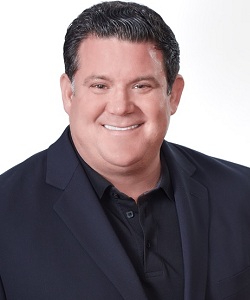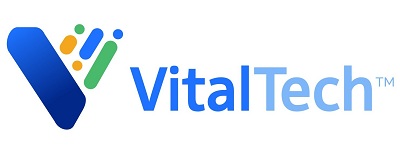1. Tell us something about Free Telehealth Access. What can we expect from it in the post-COVID-19 scenario?
In the post-COVID19 world, I would expect Congress and the Medicare Chairman to keep a majority of the telehealth rules that were relaxed during the pandemic in place. Consumers will not want to go back to the telehealth restrictions we faced pre-COVID, as they have used and benefitted from its services during this time. Telehealth use has surged around the world these past few months and it will continue to be an important healthcare tool moving forward.
2. This virtual care innovation is a boom for senior citizens & high-risk patients. What are the monitoring elements that will be covered under the VitalCare Platform?
The VitalCare platform offers a robust suite of capabilities to ensure patients have continuous touchpoints throughout the healthcare continuum. The combination of integrated safety solutions, comprehensive health and wellness tools and smart wearable devices ensure proactive and more holistic care for patients. VitalCare enables an integrated care model that helps providers to easily monitor and connect with patients.
Since seniors are the most difficult demographic to serve with technology, VitalCare has designeda senior-friendly interface that integrates vital signs, nutrition, medication management and simple communication tools to interact with health practitioners or family members remotely.
VitalCare has incorporated advanced biometric wearables as well as sensors to track activities of daily living. These sensors are Bluetooth low-energy beacons placed throughout the home or in a living facility to track key aspects of patient activity. The data collected from these ADL Activity Tags provide valuable insights into a patient’s normal living activity, which helps healthcare practitioners make more informed decisions that improve overall safety, health and wellness.
3. Building such a big and seamless platform requires a robust smart technology in place. Please share your insights on it and looking forward to what more can we expect within this platform?
Building a market-leading platform requires that we to continue to innovate and iterate to make sure we are providing the best services and equipment for our customers.
This focus on innovation has led VitalTech to develop the VitalBandTM and VitalBandTM LTE, which will be launched this month. The VitalB and monitors fall alerts, emergency voice call out, biometrics, activity and can be easily connected to any smartphone. The VitalB and features on-wrist charging for 24/7 safety, alerts to notify up to five contacts, water and sweat resistance, and medication reminders. The wearables also include the capability to configure text and email alerts, as well as 24/7 medical alert monitoring.
4. What are the steps taken to manage the physiological changes in patients incurred by new medications? Tell us more about the systems that help track the patient’s transformation.
It is important to track a patient’s biometrics and vital signs, as well as send out medication surveys when a patient begins to take new medication. This comprehensive approach will help providers identify physiological and other symptoms changes that flag if the medication needs to be adjusted. Providers need to look at telehealth as just one piece of the overall care strategy.
5. How’s the interaction between the physician and patients done through the virtual hospital setup?
Through the virtual hospital setup patients can communicate with their physicians both synchronously and asynchronously. Such communication includes sending messages, pulling lab reports, scheduling appointments, having face-to-face video sessions with vitals, sending trend vitals and more.
Virtual hospitals exponentially expand how patients can communicate and interact with their physicians. It provides more options and increases access at the most critical times throughout the healthcare continuum. This type of communication is more effective than the two-minute face-to-face encounter you have with your physician at the doctor’s office once or twice a year. Furthermore, through this setup doctors will get more time back, allowing them to focus more on patient care and have that extend one-on-one time with patients who need it.
6. Being a data-intensive structure, please highlight how figures and facts will be used to track a patient’s health via the video platform?
VitalTech is a very data-driven organization to make sure healthcare practitioners are equipped with the most updated data and actionable insights to provide the best quality of care.The software and hardware was built with the patient in mind, which is why VitalTech offers the complete end-to-end solution for those in need of comprehensive care. For example, the VitalCare platform includes a thorough set of metrics, including heart rate, blood pressure, glucose, temperature and more. Not only do these metrics alert care providers if a metric falls outside of the identified threshold, but it enables patients to better self-monitor and take swift action to promote self-care. Additionally, the platform allows for nutrition data to be logged through voice inputs or simple barcode scanning to help patients stay on track with health goals.
Another important data aspect of the VitalCare platform is the medication reminders. Such reminders can be pushed to a patient’s VitalTech-provided tablet or sent to the VitalB and smart watch at a specific time of the day. Patients and clinicians can add or track medications to help avoid adverse reactions from prescription conflicts. These reminders also help with compliance in taking the prescribed medication at the recommended dose and frequency.
However, it is important to note that presenting this data only when needed by the healthcare practitioner is very important. Data overload and alarm fatigue is a big issue in healthcare. Our system allows for very intelligent alarm routing and data visualization so that you only see data on demand and when needed.
7. Kindly share your thoughts on the VitalCare Family app and also describe how relevant it is in today’s scenario?
The VitalCare Family Connect App is a very relevant component of the platform, especially during the COVID-19 pandemic. Thousands of seniors living alone or in long-term care facilities have been isolated from loved ones for the past few months, as this population is vulnerable to this illness. In fact, the Centers for Disease Control and Protection (CDC) reported that eight out of 10 coronavirus-related deaths in the United States have been in adults 65 years and older. Through VitalCare’s Family Connect App, seniors can follow the CDC’s social distancing guidelines and still keep in touch with family members.
The Family Connect App allows family members stay connected 24/7 through the app that’s available on any smart device. The video and audio calls can help seniors feel connected in these times of social isolation. Additionally, through the app family members can view current and historical readings of vital signs, such as heart rate, respiration rate, blood pressure and SpO2. A third component of the Family Connect App to note is the fall and SOS alerts. Family members are able to customize how they receive fall and SOS alerts through the app. Pre-configured contacts can receive alerts through an automated phone call, text or email.
8. What are the challenges you face when it comes to engaging hospitals to shift from their traditional operations to the modern virtual platform?
Pre-COVID there were several challenges the industry faced when engaging with hospitals to transform their traditional operations. However, now in the middle of the pandemic, hospitals are already beginning to embrace the transformation and are in fact asking for it. The key is working closely with hospitals to implement the particular version of their vision of what a virtual hospital looks like.
9. Tell us something more about the cost-effectiveness which the virtual hospitals are going to offer. What are the steps taken to train the existing medical personnel to make them compatible with the VitalCare platform?
There are a few examples of how a virtual hospital will be more cost-effective.For patients, it will be more cost-effective in terms of time. Patients will save time driving to the doctor’s office and spending time sitting in the waiting room.
For hospitals, this design is more cost-effective as physicians will need smaller physical footprints and smaller clinics, which will result in decreased real estate costs. Also, staff and doctors will be able to see patients more efficiently, have a lower risk for burn out, have lower readmission rates and receive better patient outcomes. Overall, the impact on total cost of care will benefit dramatically.
We typically have three phases of training for integrating the VitalCare platform into existing work streams. First, the IT team is trained on how to work with the platform, then nurses are taught how to care for patients and finally the physicians learn how to extract the needed data.
10. What was the idea behind VitalTech initiating the Virtual Care and Virtual Hospitals concept?
At one point we all have envisioned a hospital of the future and what it would look like.The old, outdated technologies currently within hospitals slow down efficiencies and the overall quality of patient care. The coronavirus has forced the healthcare community to shift to virtual care models and digital health solutions to protect workers and patient. This transition has accelerated the industry’s progress towards building a virtual hospital of the future.
Virtual hospitals focus on the following:
- Empowering patients: Patients will have the confidence to succeed in managing and/or improving their health from the comfort of their home, in-between regular office visits.
- Improving outcomes: Proactive care enables patients to prevent possible health emergencies before they happen.
- Personalizing Care: By meeting patients where they are in their custom health journey ensures they receive the needed care.
- Enhancing quality of life: Health practitioners can help patients create healthy habits through proactive patient outreach and support.
11. With technology and data playing a key role in the functioning of virtual hospitals, describe how it will be different from your perspective when we compare it with the erstwhile traditional hospital visits?
Technology and data are central to the development of virtual hospitals. It is critical to develop a turn-key system that is comprehensive for both the health care provider and patient at every step of the health care journey.
These virtual hospitals would include a virtual Emergency Department (ED), in which non-emergency patients would be redirected from the ED and to a primary care doctor’s office, urgent care clinic or telehealth. This strategy follows the Emergency Triage, Treat and Transport (ET3) Model that was accelerated during the pandemic, to allow beneficiaries to access the most appropriate emergency services at the right time and place. The ET3 model works to improve care quality and lower costs by reducing the number of avoidable ER visits and hospitalizations.Another model for consideration is designating digital check-Ins and telehealth services for non-emergency visits to the ED. Leveraging paramedics’ down-time to treat patients can keep patients out of the waiting room and take the weight off of the ED.
A virtual care center is another component of the virtual hospital system, developed to lessen the costly burdens that come with traditional brick and mortar health models. The virtual care center gives health care providers the tools to increase efficiencies while offering patient-centered care. These providers can treat patients across facilities, and decrease the time spent on paperwork and administrative processes.
The final component of the virtual hospital system is the concept of having a hospital at home. For acute conditions that only require a 3-5 day hospital stay, it is safer to have these patients treated at home. The current advancements in technology allow for proactive monitoring, which offers a higher standard of care compared to what is traditionally provided within a hospital. Peripheral medical devices and data collection can help patients and health care providers identify issues early on or avoid them altogether.
12. Tell us something more about the future of the VitalCare platform from a geographical point of view. What are your plans to deal with the geo-political situations when you go beyond boundaries?
VitalTech has partnerships with several large, multinational leaders in the healthcare space, and we plan to address each major geography systematically. Each geography has its own set of data privacy and technology rules, and we intend to thoughtfully roll out our services market by market to ensure we adhere to the existing guidelines.




















